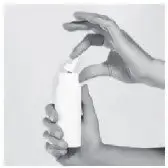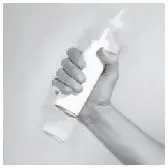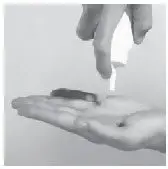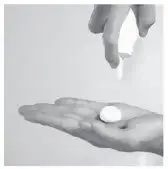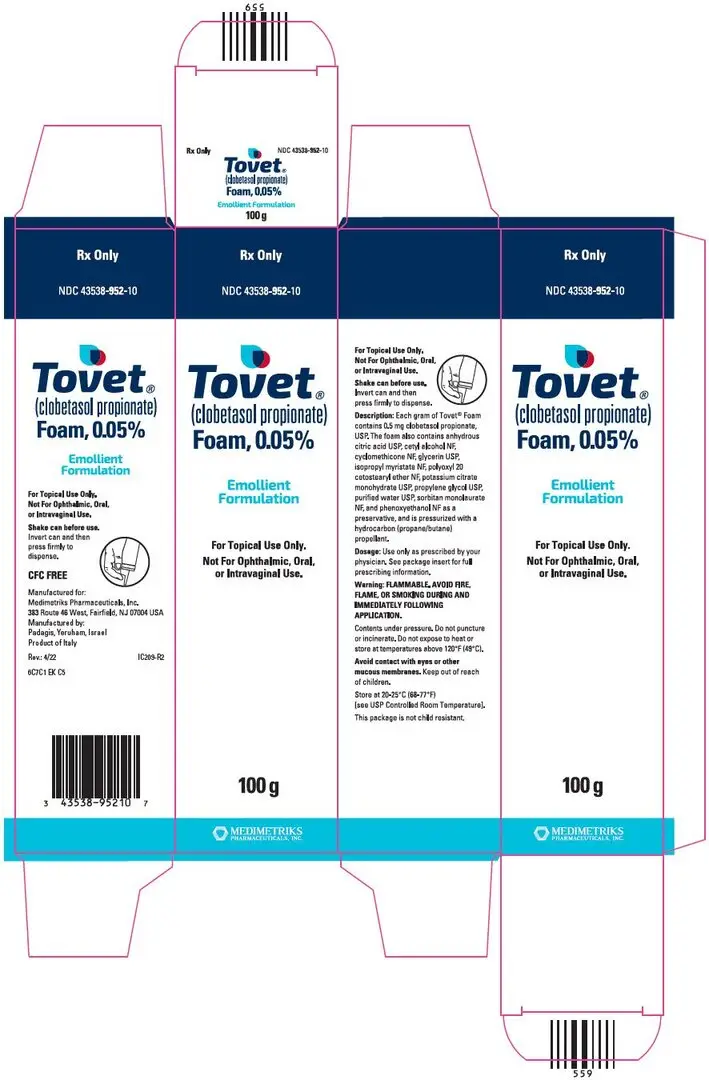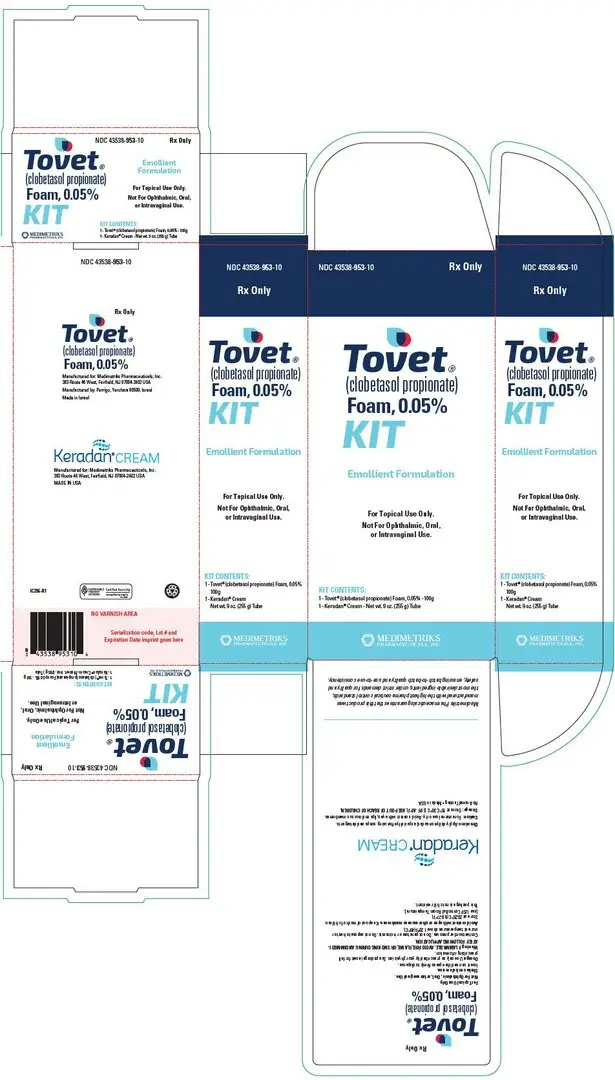Drug Detail:Tovet (Clobetasol topical [ kloe-bay-ta-sol ])
Drug Class: Topical steroids
Highlights of Prescribing Information
See full prescribing information for TOVET (CLOBETASOL PROPIONATE) FOAM (EMULSION).
TOVET® (CLOBETASOL PROPIONATE) foam, 0.05% (Emollient Formulation)
For topical use
Initial U.S. Approval: 1985
Recent Major Changes
Warnings and Precautions, Ophthalmic Adverse Reactions (5.3) 05/2018
Indications and Usage for Tovet Foam
- Tovet Foam is a corticosteroid indicated for the treatment of inflammatory and pruritic manifestations of corticosteroid-responsive dermatoses in patients 12 years and older. (1)
Tovet Foam Dosage and Administration
Tovet Foam is not for oral, ophthalmic, or intravaginal use. (2)
- Apply Tovet Foam to the affected area(s) twice daily, morning and evening, for up to 2 consecutive weeks. The maximum weekly dose should not exceed 50 g. (2)
- Avoid use on face, axilla, and groin, or if skin atrophy is present at the treatment site. (2)
Dosage Forms and Strengths
Foam, 0.05%. (3)
Contraindications
None. (4)
Warnings and Precautions
- Tovet Foam has been shown to suppress the HPA axis. Systemic absorption of Tovet Foam may produce reversible HPA axis suppression, Cushing's syndrome, hyperglycemia, and unmask latent diabetes. (5.1)
- Because of the potential for systemic absorption, use of topical corticosteroids may require that patients be periodically evaluated for HPA axis suppression. (5.1)
- Modify use should HPA axis suppression develop. (5.1)
- High potency corticosteroids, large treatment surface areas, prolonged use, use of occlusive dressings, altered skin barrier, and liver failure may predispose patients to HPA axis suppression. (5.1)
- May increase the risk of cataract and glaucoma. If visual symptoms occur, consider referral to an ophthalmologist for evaluation. (5.3)
- Pediatric patients may be more susceptible to systemic toxicity when treated with topical corticosteroids. (5.1, 8.4)
- The propellant in Tovet Foam is flammable. Avoid fire, flame, or smoking during and immediately following application. (5.5)
Adverse Reactions/Side Effects
The most common adverse reactions (incidence ≥ 1%) are application site atrophy and application site reaction. (6.1)
To report SUSPECTED ADVERSE REACTIONS, contact Medimetriks Pharmaceuticals, Inc., at 1-973-882-7512 or FDA at 1-800-FDA-1088 or www.fda.gov/medwatch.
See 17 for PATIENT COUNSELING INFORMATION and FDA-approved patient labeling.
Revised: 4/2022
Related/similar drugs
Cosentyx, Dupixent, Stelara, prednisone, methotrexate, Humira, cyclosporineFull Prescribing Information
1. Indications and Usage for Tovet Foam
Tovet Foam is indicated for the treatment of inflammatory and pruritic manifestations of corticosteroid-responsive dermatoses in patients 12 years and older.
2. Tovet Foam Dosage and Administration
- Apply a thin layer of Tovet Foam to the affected area(s) twice daily, morning and evening, for up to 2 consecutive weeks; therapy should be discontinued when control has been achieved.
- The maximum weekly dose should not exceed 50 g or an amount greater than 21 capfuls per week.
- For proper dispensing of foam, shake the can, hold it upside down, and depress the actuator.
- Dispense a small amount of foam (about a capful) and gently massage the medication into the affected areas (excluding the face, groin, and axillae) until the foam is absorbed.
- Tovet Foam is not for oral, ophthalmic, or intravaginal use.
- Avoid contact with the eyes.
- Avoid use on face, axillae, and groin, or if skin atrophy is present at the treatment site.
- Wash hands after each application.
3. Dosage Forms and Strengths
Tovet (clobetasol propionate) Foam, 0.05% (Emulsion) contains 0.5 mg of clobetasol propionate, USP per gram.
5. Warnings and Precautions
5.1 Effects on Endocrine System
Clobetasol propionate foam, 0.05% (emulsion) has been shown to suppress the hypothalamic-pituitary-adrenal (HPA) axis.
Systemic absorption of clobetasol propionate foam, 0.05% (emulsion) has caused reversible HPA axis suppression with the potential for clinical glucocorticoid insufficiency. This may occur during treatment or upon withdrawal of the topical corticosteroid. Use of clobetasol propionate foam, 0.05% (emulsion) for longer than 2 weeks may suppress the immune system [see Nonclinical Toxicology (13.1)].
In a trial including 37 subjects 12 years and older with atopic dermatitis of at least 30% body surface area (BSA), adrenal suppression was identified in 6 out of 37 subjects (16.2%) after 2 weeks of treatment with clobetasol propionate foam, 0.05% (emulsion) [see Clinical Pharmacology (12.2)].
Because of the potential for systemic absorption, use of clobetasol propionate foam, 0.05% (emulsion) may require that patients be periodically evaluated for HPA axis suppression. Factors that predispose a patient using a topical corticosteroid to HPA axis suppression include the use of more potent steroids, use over large surface areas, use over prolonged periods, use under occlusion, use on an altered skin barrier, and use in patients with liver failure.
An adrenocorticotrophic hormone (ACTH) stimulation test may be helpful in evaluating patients for HPA axis suppression. If HPA axis suppression is documented, an attempt should be made to gradually withdraw the drug, to reduce the frequency of application, or to substitute a less potent steroid. Manifestations of adrenal insufficiency may require systemic corticosteroids. Recovery of HPA axis function is generally prompt and complete upon discontinuation of topical corticosteroids.
Cushing's syndrome, hyperglycemia, and unmasking of latent diabetes mellitus can also result from systemic absorption of topical corticosteroids.
Use of more than 1 corticosteroid-containing product at the same time may increase the total systemic corticosteroid exposure.
Pediatric patients may be more susceptible to systemic toxicity from equivalent doses because of their larger skin surface-to-body mass ratios [see Use in Specific Populations (8.4)].
5.2 Local Adverse Reactions with Topical Corticosteroids
Local adverse reactions may be more likely to occur with occlusive use, prolonged use, or use of higher potency corticosteroids. Reactions may include atrophy, striae, telangiectasias, burning, itching, irritation, dryness, folliculitis, acneiform eruptions, hypopigmentation, perioral dermatitis, allergic contact dermatitis, secondary infection, and miliaria. Some local adverse reactions may be irreversible.
Allergic contact dermatitis to any component of topical corticosteroids is usually diagnosed by a failure to heal rather than a clinical exacerbation. Clinical diagnosis of allergic contact dermatitis can be confirmed by patch testing.
If irritation develops, treatment with Tovet Foam should be discontinued and appropriate therapy instituted.
5.3 Ophthalmic Adverse Reactions
Use of topical corticosteroids, including Tovet Foam, may increase the risk of posterior subcapsular cataracts and glaucoma. Cataracts and glaucoma have been reported postmarketing with the use of topical corticosteroids, including topical clobetasol products [see Adverse Reactions (6.2)].
Avoid contact of Tovet Foam with eyes. Advise patients to report any visual symptoms and consider referral to an ophthalmologist for evaluation.
6. Adverse Reactions/Side Effects
The following adverse reactions are discussed in greater detail in other sections of the labeling:
- Effects on Endocrine System [see Warnings and Precautions (5.1)]
- Ophthalmic Adverse Reactions [see Warnings and Precautions (5.3)]
6.1 Clinical Trials Experience
Because clinical trials are conducted under widely varying conditions, adverse reaction rates observed in the clinical trials of a drug cannot be directly compared to rates in the clinical trials of another drug and may not reflect the rates observed in clinical practice.
In controlled clinical trials involving 821 subjects exposed to clobetasol propionate foam, 0.05% (emulsion) and vehicle foam, the pooled incidence of local adverse reactions in trials for atopic dermatitis and psoriasis with clobetasol propionate foam, 0.05% (emulsion) was 1.9% for application site atrophy and 1.6% for application site reaction. Most local adverse events were rated as mild to moderate and they were not affected by age, race, or gender.
6.2 Postmarketing Experience
Because these reactions are reported voluntarily from a population of uncertain size, it is not always possible to reliably estimate their frequency or establish a causal relationship to drug exposure.
The following adverse reactions have been identified during post-approval use of clobetasol formulations: erythema, pruritus, burning, alopecia, and dryness.
The following additional local adverse reactions have been reported with topical corticosteroids: folliculitis, acneiform eruptions, hypopigmentation, perioral dermatitis, allergic contact dermatitis, secondary infection, irritation, striae, and miliaria. They may occur more frequently with the use of occlusive dressings and higher potency corticosteroids, such as clobetasol propionate.
Cushing's syndrome has been reported in infants and adults as a result of prolonged use of topical clobetasol propionate formulations.
Ophthalmic adverse reactions may include cataracts, glaucoma, increased intraocular pressure, and central serous chorioretinopathy.
8. Use In Specific Populations
8.1 Pregnancy
Risk Summary
There are no available data on Tovet Foam use in pregnant women to inform of a drug associated risk for adverse developmental outcomes.
Published data report a significantly increased risk of low birth weight with the use of greater than 300 grams of potent or very potent topical corticosteroid during a pregnancy. Advise pregnant women of the potential risk to a fetus and to use Tovet Foam on the smallest area of skin and for the shortest duration possible (see Data).
In animal reproduction studies, increased malformations, such as cleft palate and skeletal abnormalities, were observed after subcutaneous administration of clobetasol propionate to pregnant mice and rabbits. No comparison of animal exposure with human exposure was computed.
The background risk of major birth defects and miscarriage for the indicated population is unknown. All pregnancies have a background risk of birth defect, loss, or other adverse outcomes. In the U.S. general population, the estimated background risk of major birth defects and miscarriage in clinically recognized pregnancies is 2 to 4% and 15 to 20%, respectively.
8.4 Pediatric Use
Use in pediatric patients younger than 12 years is not recommended because of the risk of HPA axis suppression.
After two weeks of twice-daily treatment with clobetasol propionate foam, 0.05% (emulsion), 7 of 15 subjects (47%) aged 6 to 11 years demonstrated HPA axis suppression. The laboratory suppression was transient; in all subjects serum cortisol levels returned to normal when tested 4 weeks post-treatment.
In 92 subjects aged 12 to 17 years, safety was similar to that observed in the adult population. Based on these data, no adjustment of dosage of Tovet Foam in adolescent patients aged 12 to 17 years is warranted [see Warnings and Precautions (5.1)].
Because of a higher ratio of skin surface area to body mass, pediatric patients are at a greater risk than adults of HPA axis suppression and Cushing's syndrome when they are treated with topical corticosteroids. They are therefore also at greater risk of adrenal insufficiency during and/or after withdrawal of treatment.
HPA axis suppression, Cushing's syndrome, linear growth retardation, delayed weight gain, and intracranial hypertension have been reported in children receiving topical corticosteroids. Manifestations of adrenal suppression in children include low plasma cortisol levels and an absence of response to ACTH stimulation. Manifestations of intracranial hypertension include bulging fontanelles (in infants), headaches, and bilateral papilledema. Administration of topical corticosteroids to children should be limited to the least amount compatible with an effective therapeutic regimen. Chronic corticosteroid therapy may interfere with the growth and development of children.
Adverse effects, including striae, have been reported with inappropriate use of topical corticosteroids in infants and children.
8.5 Geriatric Use
A limited number of subjects aged 65 years or older have been treated with clobetasol propionate foam, 0.05% (emulsion) (n = 58) in US clinical trials. While the number of subjects is too small to permit separate analysis of efficacy and safety, the adverse reactions reported in this population were similar to those reported by younger subjects. Based on available data, no adjustment of dosage of Tovet Foam in geriatric patients is warranted.
10. Overdosage
Topically applied Tovet Foam can be absorbed in sufficient amounts to produce systemic effects.
11. Tovet Foam Description
Tovet (clobetasol propionate) Foam, 0.05% (Emulsion) is a white to off-white petrolatum-based emulsion aerosol foam containing the active ingredient clobetasol propionate, USP, a synthetic corticosteroid for topical dermatologic use. Clobetasol, an analog of prednisolone, has a high degree of glucocorticoid activity and a slight degree of mineralocorticoid activity.
Clobetasol propionate is 21-chloro-9-fluoro-11ß,17-dihydroxy-16ß-methylpregna-1,4-diene-3,20-dione 17-propionate, with the empirical formula C25H32ClFO5, and a molecular weight of 466.97.
The following is the chemical structure:
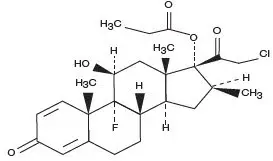
Clobetasol Propionate, USP
Clobetasol propionate is a white to almost white crystalline powder, practically insoluble in water.
Each gram of Tovet Foam contains 0.5 mg clobetasol propionate, USP. The foam also contains anhydrous citric acid, cetyl alcohol, cyclomethicone, glycerin, isopropyl myristate, polyoxyl 20 cetostearyl ether, potassium citrate monohydrate, propylene glycol, purified water, sorbitan monolaurate, and phenoxyethanol as a preservative.
Tovet Foam is dispensed from an aluminum can pressurized with a hydrocarbon (propane/butane) propellant.
12. Tovet Foam - Clinical Pharmacology
12.1 Mechanism of Action
Corticosteroids play a role in cellular signaling, immune function, inflammation, and protein regulation; however, the precise mechanism of action in corticosteroid-responsive dermatoses is unknown.
12.2 Pharmacodynamics
In a trial evaluating the potential for HPA axis suppression using the cosyntropin stimulation test, clobetasol propionate foam, 0.05% (emulsion) demonstrated reversible adrenal suppression after two weeks of twice-daily use in subjects with atopic dermatitis of at least 30% body surface area (BSA). The proportion of subjects aged 12 years and older demonstrating HPA axis suppression was 16.2% (6 out of 37). In this trial HPA axis suppression was defined as serum cortisol level ≤18 mcg/dL 30 minutes post cosyntropin stimulation. The laboratory suppression was transient; in all subjects serum cortisol levels returned to normal when tested 4 weeks post treatment. [see Warnings and Precautions (5.1), Use In Specific Populations (8.4)].
12.3 Pharmacokinetics
Topical corticosteroids can be absorbed from intact healthy skin. The extent of percutaneous absorption of topical corticosteroids is determined by many factors, including the product formulation and the integrity of the epidermal barrier. Occlusion, inflammation, and/or other disease processes in the skin may increase percutaneous absorption. The use of pharmacodynamic endpoints for assessing the systemic exposure of topical corticosteroids may be necessary due to the fact that circulating levels are often below the level of detection. Once absorbed through the skin, topical corticosteroids are metabolized primarily in the liver and are then excreted by the kidneys. Some corticosteroids and their metabolites are also excreted in the bile.
Following twice-daily application of clobetasol propionate foam, 0.05% (emulsion) for one week to 32 adult subjects with mild to moderate plaque-type psoriasis, mean peak plasma concentrations (±SD) of 59 ± 36 pg/mL of clobetasol were observed at around 5 hours post dose on Day 8.
13. Nonclinical Toxicology
13.1 Carcinogenesis, Mutagenesis, Impairment of Fertility
Long-term animal studies have not been performed to evaluate the carcinogenic potential of clobetasol propionate foam, 0.05% (emulsion) or clobetasol propionate.
In a 90-day repeat-dose toxicity study in rats, topical administration of clobetasol propionate foam, 0.05% (emulsion) at dose concentrations from 0.001% to 0.1% or from 0.03 to 0.3 mg/kg/day of clobetasol propionate resulted in a toxicity profile consistent with long-term exposure to corticosteroids including adrenal atrophy, histopathological changes in several organ systems indicative of severe immune suppression and opportunistic fungal and bacterial infections. A no observable adverse effect level could not be determined in this study. Although the clinical relevance of the findings in animals to humans is not clear, sustained glucocorticoid-related immune suppression may increase the risk of infection and possibly the risk for carcinogenesis.
Clobetasol propionate was non-mutagenic in the Ames test, the mouse lymphoma test, the Saccharomyces cerevisiae gene conversion assay, and the E. coli B WP2 fluctuation test. In the in vivo mouse micronucleus test, a positive finding was observed at 24 hours, but not at 48 hours, following oral administration at a dose of 2,000 mg/kg.
Studies in the rat following subcutaneous administration of clobetasol propionate at dosage levels up to 0.05 mg/kg per day revealed that the females exhibited an increase in the number of resorbed embryos and a decrease in the number of living fetuses at the highest dose.
14. Clinical Studies
In a randomized trial of subjects 12 years and older with moderate to severe atopic dermatitis, 251 subjects were treated with clobetasol propionate foam, 0.05% (emulsion) and 126 subjects were treated with vehicle foam. Subjects were treated twice daily for 2 weeks. At the end of treatment, 131 of 251 subjects (52%) treated with clobetasol propionate foam, 0.05% (emulsion) compared with 18 of 126 subjects (14%) treated with vehicle foam achieved treatment success. Treatment success was defined by an Investigator's Static Global Assessment (ISGA) score of clear (0) or almost clear (1) with at least 2 grades improvement from baseline, and scores of absent or minimal (0 or 1) for erythema and induration/papulation.
In an additional randomized trial of subjects 12 years and older with mild to moderate plaque-type psoriasis, 253 subjects were treated with clobetasol propionate foam, 0.05% (emulsion) and 123 subjects were treated with vehicle foam. Subjects were treated twice daily for 2 weeks. At the end of treatment, 41 of 253 subjects (16%) treated with clobetasol propionate foam, 0.05% (emulsion) compared with 5 of 123 subjects (4%) treated with vehicle foam achieved treatment success. Treatment success was defined by an ISGA score of clear (0) or almost clear (1) with at least 2 grades improvement from baseline, scores of none or faint/minimal (0 or 1) for erythema and scaling, and a score of none (0) for plaque thickness.
16. How is Tovet Foam supplied
16.1 How Supplied
Tovet® (clobetasol propionate) Foam, 0.05% (Emulsion) contains 0.5 mg of clobetasol propionate, USP per gram. The white emulsion aerosol foam is available as follows:
|
|
16.2 Storage and Handling
Store at 20° to 25°C (68° to 77°F) [see USP Controlled Room Temperature].
FLAMMABLE. AVOID FIRE, FLAME, OR SMOKING DURING AND IMMEDIATELY FOLLOWING APPLICATION. Contents under pressure. Do not puncture or incinerate. Do not expose to heat or store at temperatures above 120°F (49°C).
Keep out of reach of children.
| PATIENT INFORMATION Tovet® (clobetasol propionate) Foam, 0.05% (Emollient Formulation) |
|||
|---|---|---|---|
| IMPORTANT: For skin use only. Do not get Tovet Foam in your eyes, mouth, or vagina. | |||
| What is Tovet Foam? | |||
| Tovet Foam is a prescription corticosteroid medicine used on the skin (topical) to treat people 12 years of age and older with certain skin conditions that cause red, flaky, and itchy skin. | |||
| Tovet Foam is not recommended for use in children under 12 years of age. | |||
| Tovet Foam should not be used: | |||
|
|||
| You should not use Tovet Foam for longer than 2 weeks in a row. | |||
| You should not use more than 50 grams or 21 capfuls of Tovet Foam in 1 week. | |||
| Before using Tovet Foam, tell your healthcare provider about all of your medical conditions, including if you: | |||
|
|||
| Tell your healthcare provider about all the medicine you take including prescription and over-the-counter medicines, vitamins, and herbal supplements. Do not use other products containing a corticosteroid medicine during treatment with Tovet Foam without talking to your healthcare provider first. | |||
| How should I use Tovet Foam? | |||
| See the "Instructions for Use" for detailed information about the right way to apply Tovet Foam. | |||
|
|||
| What should I avoid while using Tovet Foam? | |||
| Tovet Foam is flammable. Avoid heat, flame, or smoking during and right after you apply Tovet Foam to your skin. | |||
| What are the possible side effects of Tovet Foam? | |||
| Tovet Foam may cause serious side effects, including: | |||
|
|||
| Your healthcare provider may do certain blood tests to check for side effects. | |||
| The most common side effects of Tovet Foam include: | |||
|
|
||
| These are not all the side effects of Tovet Foam. | |||
| Call your healthcare provider for medical advice about side effects. You may report side effects to FDA at 1-800-FDA-1088. | |||
| How should I store Tovet Foam? | |||
|
|||
| Keep Tovet Foam and all medicines out of the reach of children. | |||
| General information about the safe and effective use of Tovet Foam | |||
| Medicines are sometimes prescribed for purposes other than those listed in a Patient Information leaflet. Do not use Tovet Foam for a condition for which it was not prescribed. Do not give Tovet Foam to other people, even if they have the same condition that you have. It may harm them. You can ask your healthcare provider or pharmacist for information about Tovet Foam that is written for health professionals. | |||
| What are the ingredients in Tovet Foam? | |||
| Active ingredient: clobetasol propionate | |||
| Inactive ingredients: anhydrous citric acid, cetyl alcohol, cyclomethicone, glycerin, isopropyl myristate, polyoxyl 20 cetostearyl ether, potassium citrate monohydrate, propylene glycol, purified water, sorbitan monolaurate, and phenoxyethanol as a preservative; pressurized with a hydrocarbon (propane/butane) propellant. | |||
| For more information, call Medimetriks at 1-973-882-7512. | |||
| This Patient Information has been approved by the U.S. Food and Drug Administration. | |||
| INSTRUCTIONS FOR USE Tovet® (clobetasol propionate) Foam, 0.05% (Emollient Formulation) |
|
| Important information: Tovet Foam is for use on the skin only. Do not get Tovet Foam in your eyes, mouth, or vagina; if contact happens, rinse well with water. | |
| How to apply Tovet Foam | |
| Step 1:
Before applying Tovet Foam for the first time, break the tiny plastic piece at the base of the can's rim by gently pushing back (away from the piece) on the nozzle. See Figure A. |
|
| Figure A | |
| Step 2:
Shake the can of Tovet Foam before use. See Figure B. |
|
| Figure B | |
| Step 3:
Turn the can of Tovet Foam upside down and press the nozzle. See Figure C. |
|
| Figure C | |
| Step 4:
Press down on the actuator to dispense a small amount of Tovet Foam into the palm of your hand. See Figure D. |
|
| Figure D | |
| Step 5:
Apply a thin layer of Tovet Foam to cover the affected area. Gently rub the foam into the affected area until the foam disappears. See Figure E. |
|
| Figure E | |
Step 6: Wash your hands after applying Tovet Foam.
|
|
| This Instructions for Use has been approved by the U.S. Food and Drug Administration. | |
| Rx Only | |
| Manufactured for: Medimetriks Pharmaceuticals, Inc., 383 Route 46 West, Fairfield, NJ 07004 USA Manufactured by: Padagis, Yeruham, Israel |
|
| Rev.: 4/22 IP052-R1 | |
| TOVET (EMOLLIENT FORMULATION)
clobetasol propionate aerosol, foam |
||||||||||||||||||||||||||
|
||||||||||||||||||||||||||
|
||||||||||||||||||||||||||
|
||||||||||||||||||||||||||
|
||||||||||||||||||||||||||
|
||||||||||||||||||||||||||
| TOVET FOAM (EMOLLIENT FORMULATION)
clobetasol propionate kit |
|||||||||||||||||||||||||||||||||||||||||||||||||||||||||||||||||||||||||||||||||||||||||||||||||||||||||||||||
|
|||||||||||||||||||||||||||||||||||||||||||||||||||||||||||||||||||||||||||||||||||||||||||||||||||||||||||||||
|
|||||||||||||||||||||||||||||||||||||||||||||||||||||||||||||||||||||||||||||||||||||||||||||||||||||||||||||||
|
|||||||||||||||||||||||||||||||||||||||||||||||||||||||||||||||||||||||||||||||||||||||||||||||||||||||||||||||
|
|||||||||||||||||||||||||||||||||||||||||||||||||||||||||||||||||||||||||||||||||||||||||||||||||||||||||||||||
|
|||||||||||||||||||||||||||||||||||||||||||||||||||||||||||||||||||||||||||||||||||||||||||||||||||||||||||||||
|
|||||||||||||||||||||||||||||||||||||||||||||||||||||||||||||||||||||||||||||||||||||||||||||||||||||||||||||||
|
|||||||||||||||||||||||||||||||||||||||||||||||||||||||||||||||||||||||||||||||||||||||||||||||||||||||||||||||
|
|||||||||||||||||||||||||||||||||||||||||||||||||||||||||||||||||||||||||||||||||||||||||||||||||||||||||||||||
|
|||||||||||||||||||||||||||||||||||||||||||||||||||||||||||||||||||||||||||||||||||||||||||||||||||||||||||||||
|
|||||||||||||||||||||||||||||||||||||||||||||||||||||||||||||||||||||||||||||||||||||||||||||||||||||||||||||||
|
|||||||||||||||||||||||||||||||||||||||||||||||||||||||||||||||||||||||||||||||||||||||||||||||||||||||||||||||
|
|||||||||||||||||||||||||||||||||||||||||||||||||||||||||||||||||||||||||||||||||||||||||||||||||||||||||||||||
|
|||||||||||||||||||||||||||||||||||||||||||||||||||||||||||||||||||||||||||||||||||||||||||||||||||||||||||||||
|
|||||||||||||||||||||||||||||||||||||||||||||||||||||||||||||||||||||||||||||||||||||||||||||||||||||||||||||||
|
|||||||||||||||||||||||||||||||||||||||||||||||||||||||||||||||||||||||||||||||||||||||||||||||||||||||||||||||
|
|||||||||||||||||||||||||||||||||||||||||||||||||||||||||||||||||||||||||||||||||||||||||||||||||||||||||||||||
| Labeler - Medimetriks Pharmaceuticals, Inc. (019903816) |
| Establishment | |||
| Name | Address | ID/FEI | Business Operations |
|---|---|---|---|
| Padagis | 600093611 | MANUFACTURE(43538-952) | |




